Sightseeing Spots
Search Results308
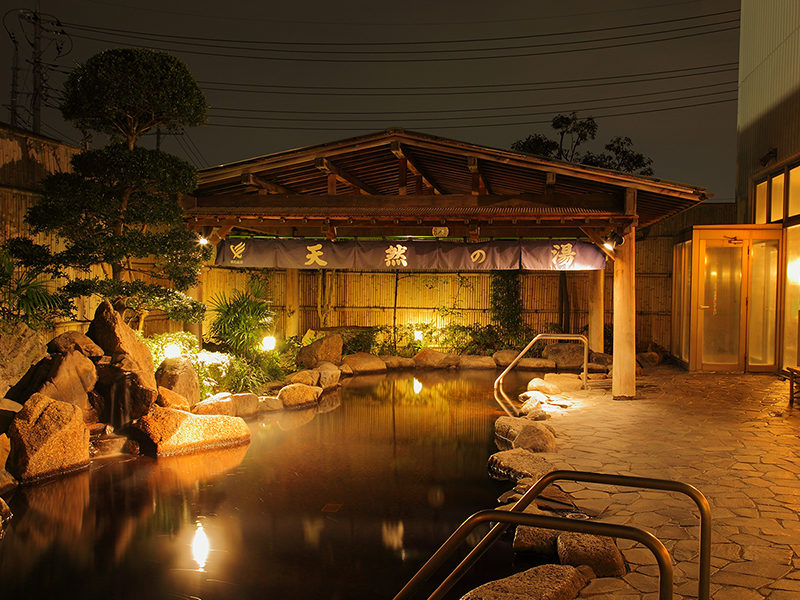
The waters of this hot spring contain no sodium, classifying it as a "simple" alkaline hot spring, a rarity in the Kanto region. The color of the water is dark brown but sparkles gold when hit by sunlight. Soaking in the hot spring will make your skin smooth, and you are guaranteed to have a relaxing time.

The original Kisai Castle was a one-story building enclosed by earthworks and walls, and it was restored as a castle with an impressive keep. Local collections of the unearthed artifacts and historical collections found through the excavations of the Kisai region are displayed in the exhibition room.
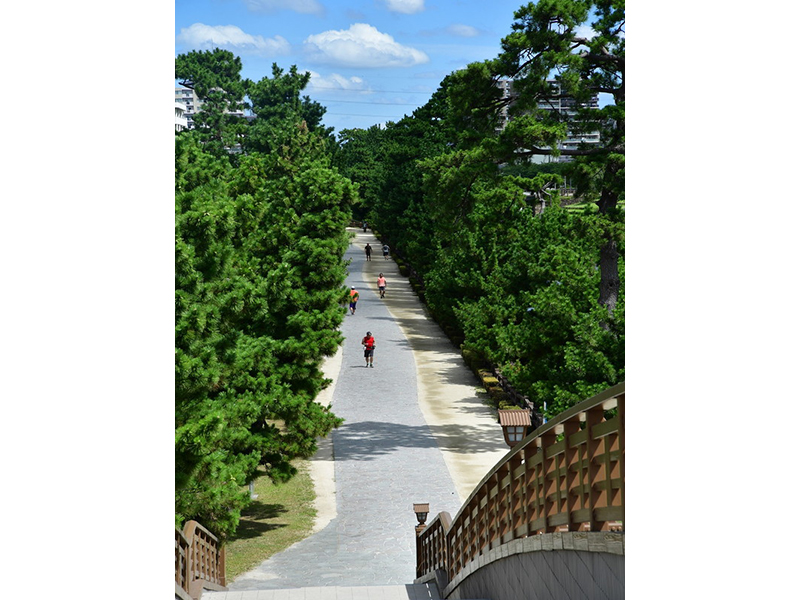
These twelve cities and towns and thirteen places of scenic beauty related to Matsuo Bashō’s “Oku no Hosomichi” have been recognized as influencing the scenery and lives of future generations, while preserving the elegance and atmosphere of ancient times. Collectively, these areas have been appointed as one of the top scenic spots in the country.
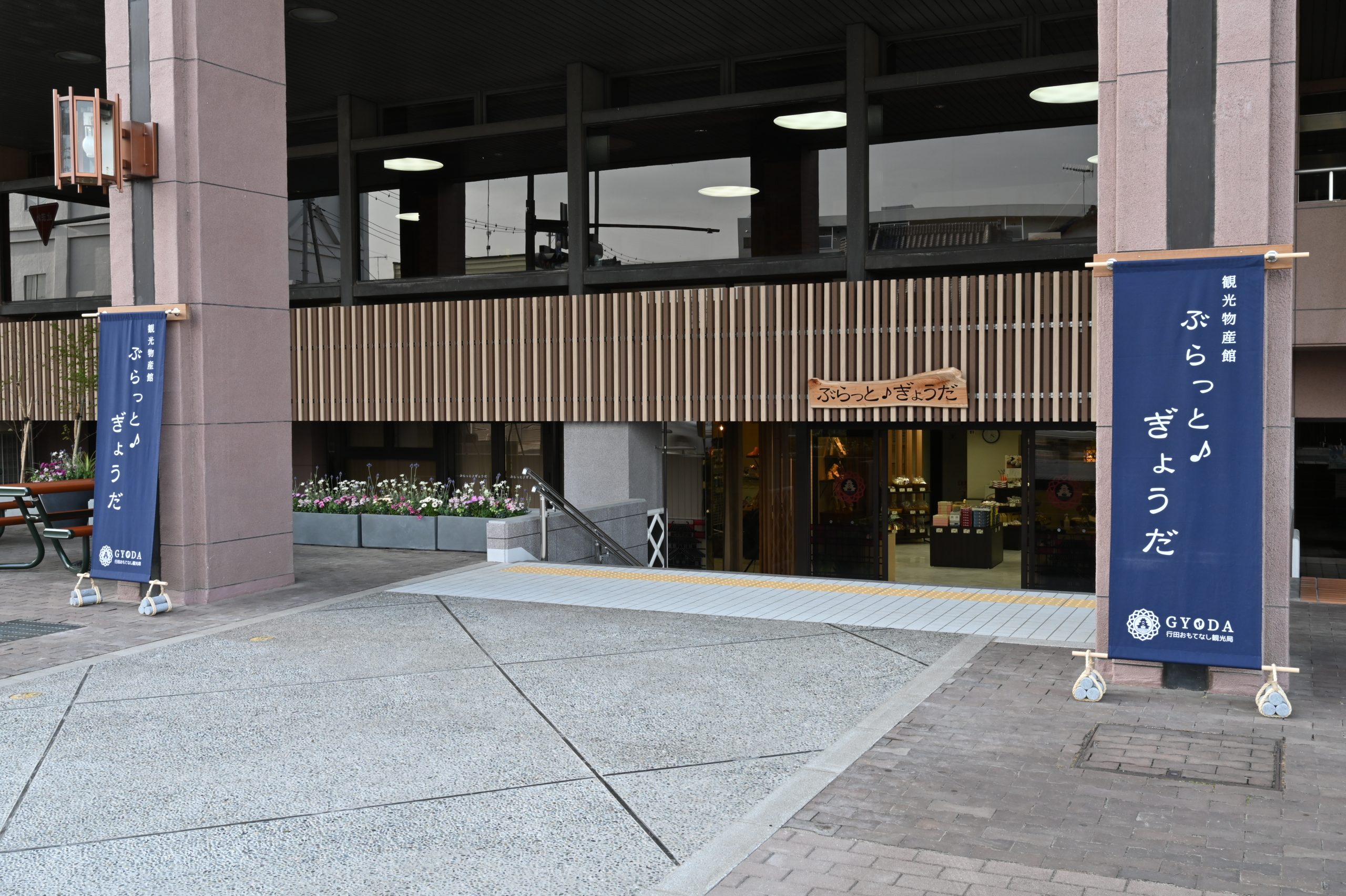
Reopened in April 2021 as a tourism and souvenir center! This store has a modern Japanese atmosphere that stays true to Gyoda City, which has been recognized as a Japanese Heritage site. There are a wide range of 150 different types of products available for sale from around 50 brands, including local goods such as fashionably designed tabi (split-toed socks), Minamikawara slippers made of colorful fabrics from Africa and other foreign countries, "Gyoda no gyoza" (dumplings) made from local flour, Narazuke pickles, Jumangoku Manju (steamed bun), Wataboku Milk, and more. So can also rent bicycles here, so be sure to stop by on your way to sightseeing.
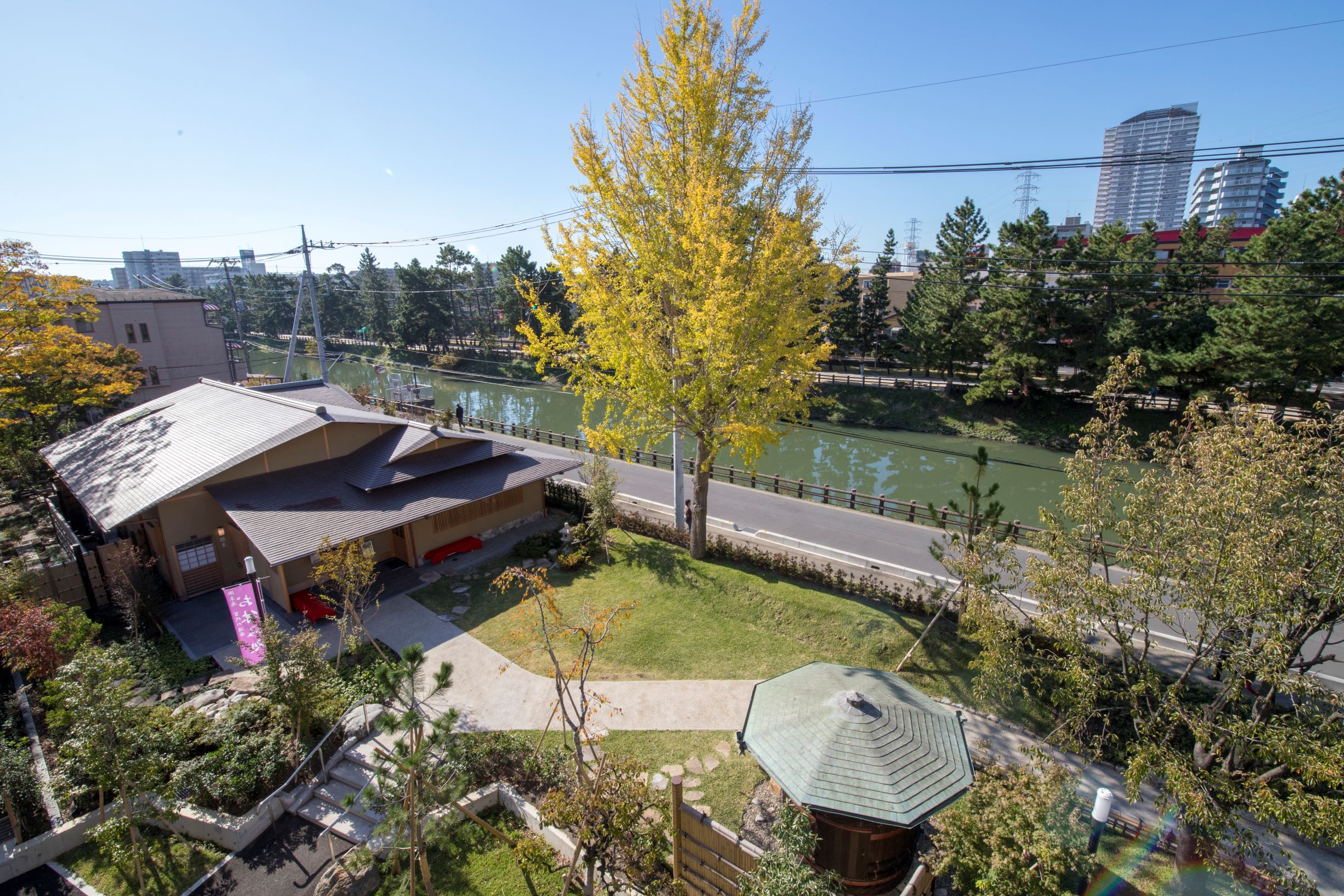
This single-floor wooden house, built using the 'Sukiya' architectural style, has been praised and written about by the Japanese literature researcher Donald Keene. The facility now serves as a place to introduce the Sōka area's culture of tea ceremony, flower arrangement, and classical instruments such as koto and shamisen. Furthermore, the facility is also open as a resting area where visitors can enjoy a cup of tea for a small fee.
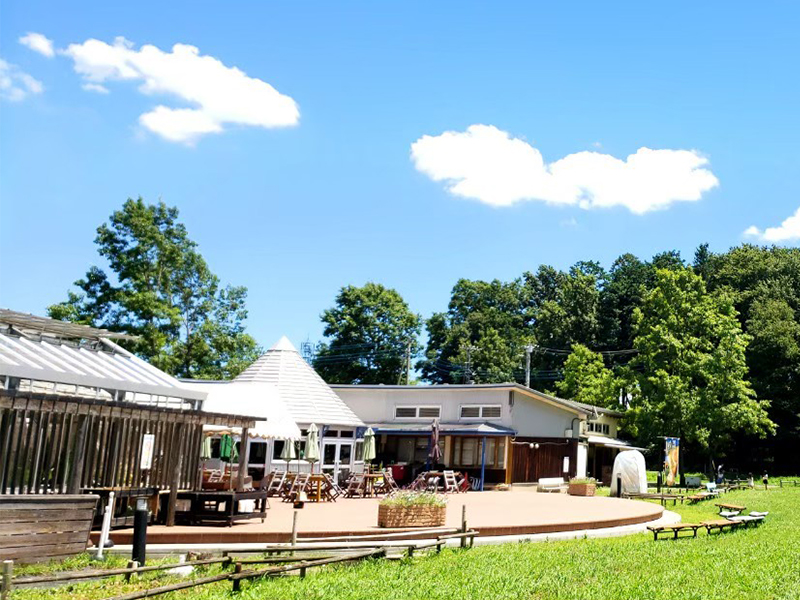
Atarashii Mura, or The New Village, is an agriculture-themed tourist facility. There is a market in the facility called "Mori no Ichiba Yui" that sells fresh vegetables produced by the local farmers of Atarashii Mura. There is also a cafe called "Mori no Cafe," where visitors can enjoy a drink or light meal. Lastly, at the facility, "Noh no Ie," they host hands-on experiences and lectures on agriculture and food, offer facility rentals, and have an herb garden of more than 100 different species where hands-on harvesting experiences for lavender and mint are available. They also grown their own rice, a popular product.

This brewery was established in 1805 when Omi merchant, Shoemon Yokota, traveled from Edo to Gyoda City in search of good water. The area closest to Tone River and Arakawa River was found to have plentiful groundwater and this brewery continues to produce exquisite sake made from it. Employing Nanbu-style brewing techniques, known for producing a high quality Ginjo sake, they produce sake in which one can taste the spirit of the brewer, a highly regarded "sake of excellence."
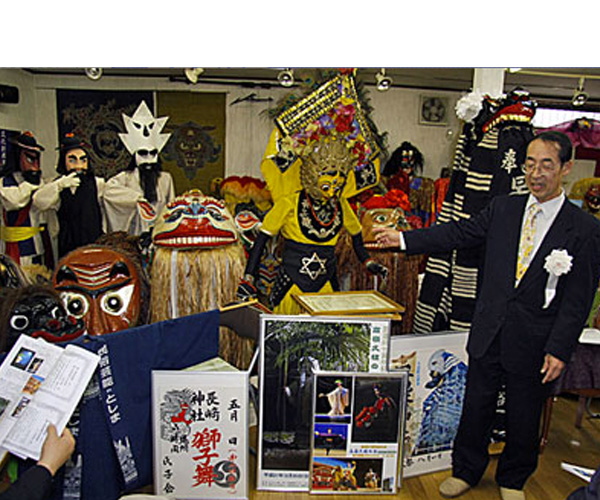
This is a private museum exhibiting ’Shishimai' (traditional lion dance), featuring authentic lion masks, costumes, documentation, performance videos from all over the country and local toys related to the lion.

In 1187, the Yoshikawa clan reestablished this shrine as the Ujigami Suwa Shrine for indigenous deities. The shrines within the precincts include Yasaka Shrine, Furumine Shrine, Inari Shrine, Matsuo Shrine, Yoshikawa Tenmangu Shrine, Suijingu Eight Great Dragons, and Shikato Daimyojin. The old Shimotsuma Highway runs behind the shrine, and a Japanese bay tree in front of the precincts and a large camphor tree in the rear tell the shrine's long history. Every July, the shrine holds the Yasaka Festival, which has a history of about 400 years. The highlight is the "abare mikoshi," portable shrines that are carried and thrown high above the heads of the bearers for a spectacular sight.
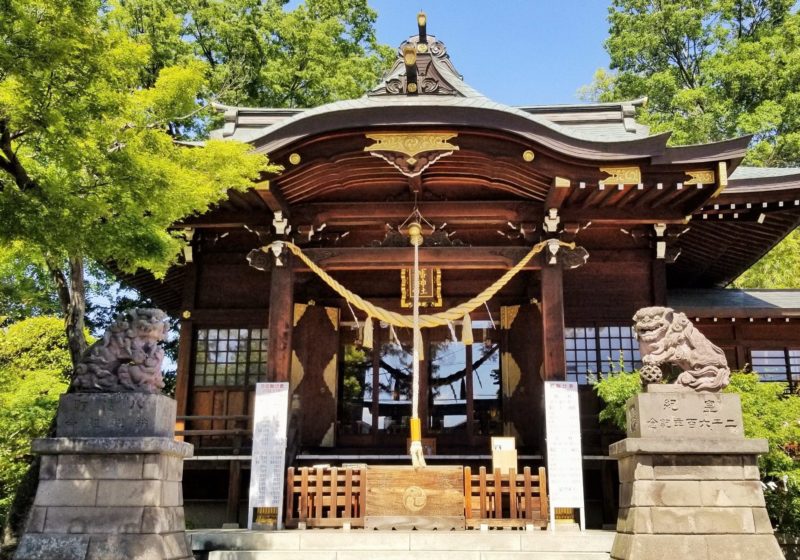
Gyōda Hachiman Shrine is called “Fūji no Miya" (Palace of Sealing) for its secret prayer method which is believed to help children sleep, prevents nervousness, cancer, diseases, bad habits and dementia in the elderly. In the precincts, there is a “shrine of the eyes,” the Kasamori Inari Shrine which enshrines the god of eczema and beautiful skin, along with “Okuninushi Shrine” that enshrines Oshi Castle’s 7 lucky gods. Recently, the “nade momo” (patting peach) is said to be a place for spiritual energy, and is famous for the god of warding off suffering from illness and misfortune.
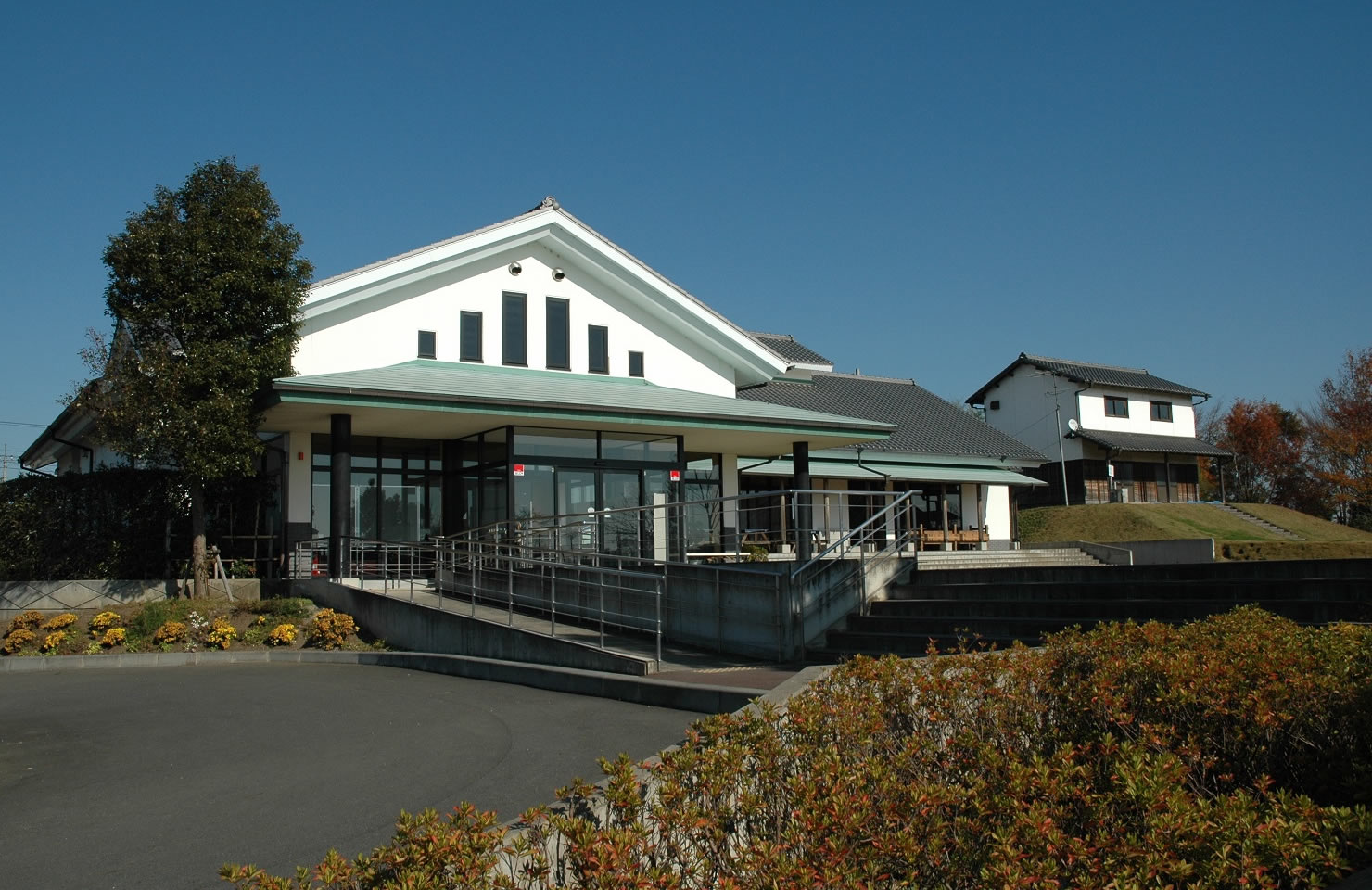
At this facility visitors can get a farming experience not obtainable in the city, such as rice growing and vegetable harvesting. Become the owner of your own rice field and plant and reap your own rice, or experience harvesting greenhouse strawberries. In the attached Kitagawabe History Museum, there are agricultural tools on display created from the wisdom and ingenuity of predecessors.
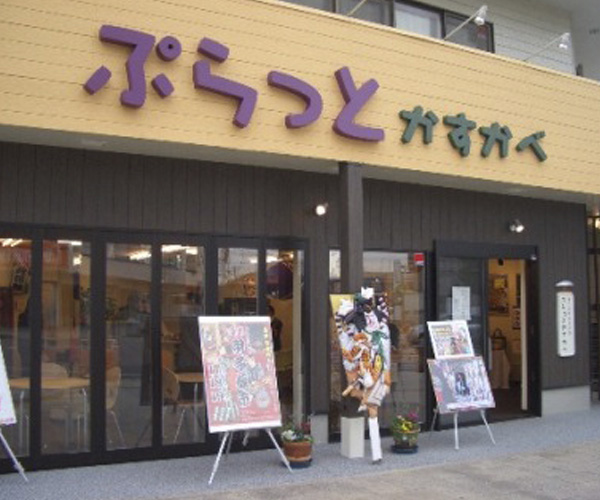
We offer tourist information and general information about the city. There is everything from displays of the original picture of “Crayon Shin-chan,” an animated character representing Kasukabe, to food for sale approved by the city’s “Food Selection." It is also registered as a “baby friendly station,” and families can use the station to change diapers and breastfeed here. Please feel free to stop by.
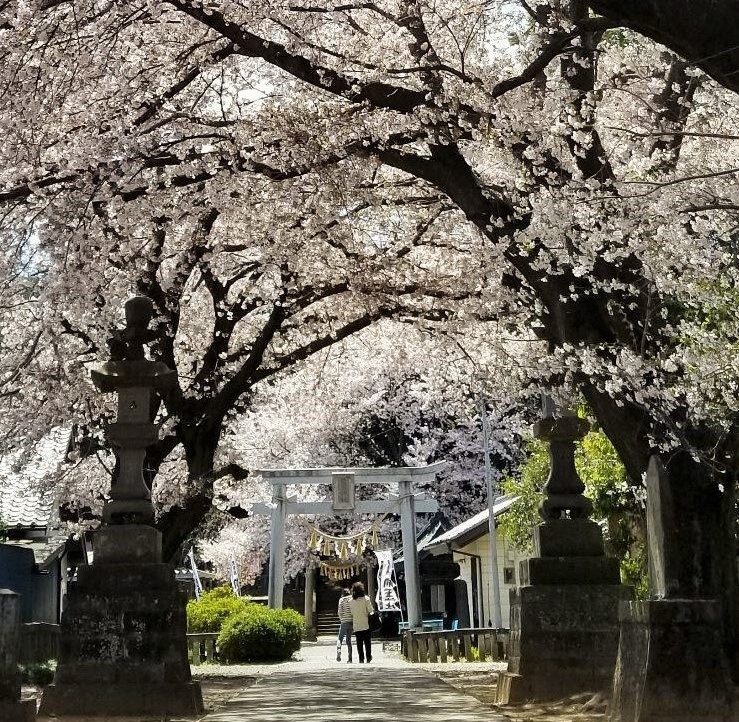
Sakitama Shrine is an ancient shrine with a majestic and calm atmosphere which holds a history of a thousand and a few hundred years, and is the origin of Saitama Prefecture's name. The main building of the shrine has a height of 8.7 meters, a circumference of about 92 meters, and is built on top of a megalith tomb (kofun) called Sengenzuka, connected to the Saitama Kofun Group. The deity has two pillars: Sakitamahime-no-mikoto and Sakitamahiko-no-mikoto, gods that protect individuals and bring good fortune and success in matrimony. Recently, a popular limited edition go-shuin (seal stamp) with a motif of the 4 cats that reside in the shrine is available (every month on the 22nd including a few days before and after).
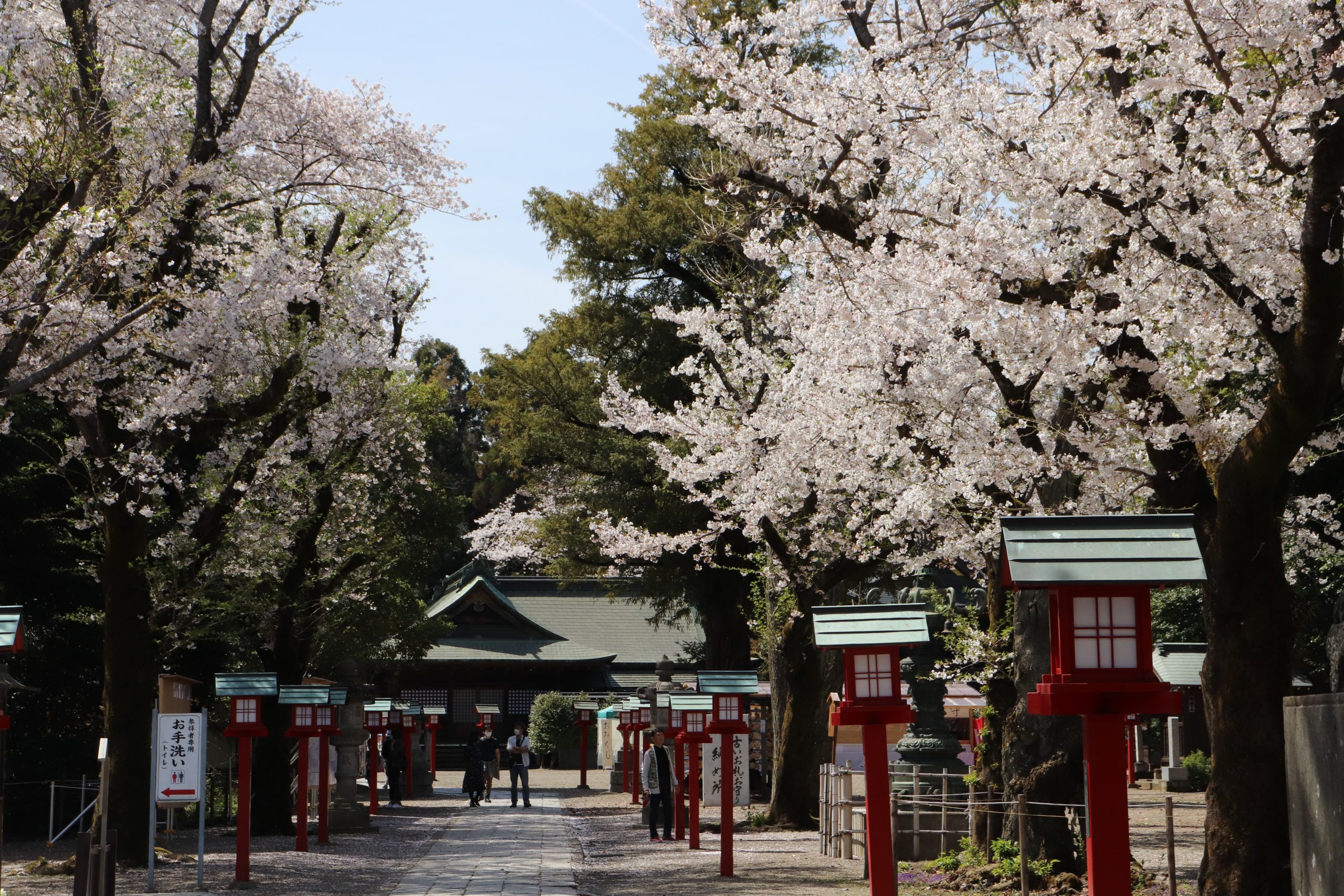
This is the oldest grand shrine in Kanto. It is said to have been founded by descendants of the Izumo family because of its old nickname, Hazenomiya; another theory is that it was established by Yamato Takeru 1900 years ago in the time of Emperor Keikō. The Washimiya Saibara Kagura music and dance is a tradition in the shrine and is designated as an important intangible folk cultural property of the country. The shrine also appears in the animation “Lucky Star,” and Washimiya shrine uses this connection to the work to revitalize the area.
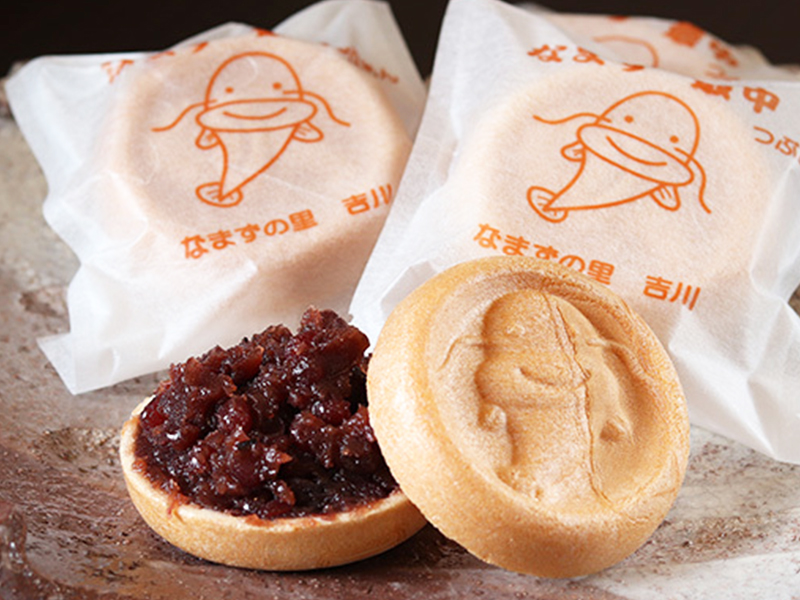
A well-established Japanese sweets shop in Yoshikawa City that has been in business for 60 years. It was relocated to behind Yoshikawa Shrine and reopened in 2019. The famous "Namazu Manju," made from homemade red bean paste cooked with a rare attention to detail, makes for a perfect souvenir. We also recommend the "Namazu Monaka" to compare the taste of smooth and coarse red bean paste, and the dango (rice flour dumplings) made fresh to order.
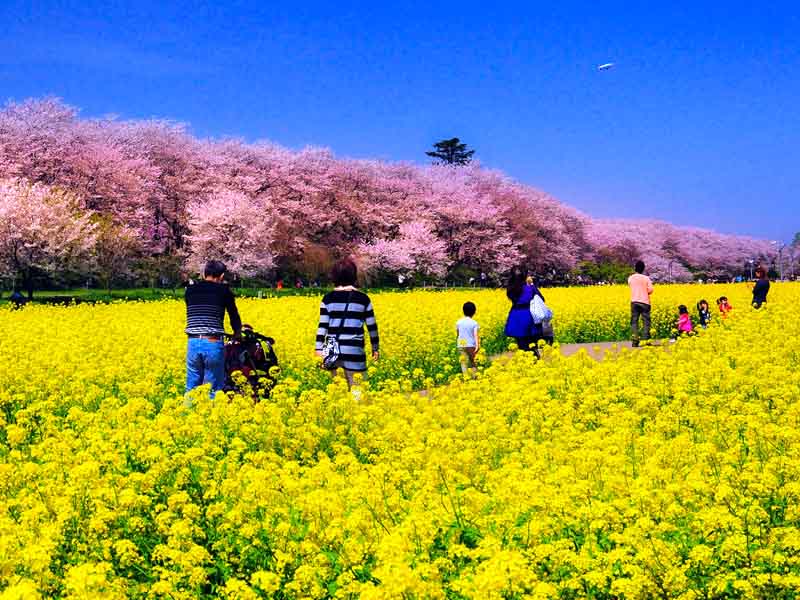
Gongendo Park is a hot spot for cherry blossoms, thanks to a 1 km stretch of 1,000 Yoshino cherry trees contrasting with beautiful yellow rapeseed flowers, and the park is filled with revelers every year. In addition, in June you can enjoy stunning hydrangea, in September the vivid red spider lily, and in January the charming white daffodils. A wonderful spot to visit, regardless of the season!
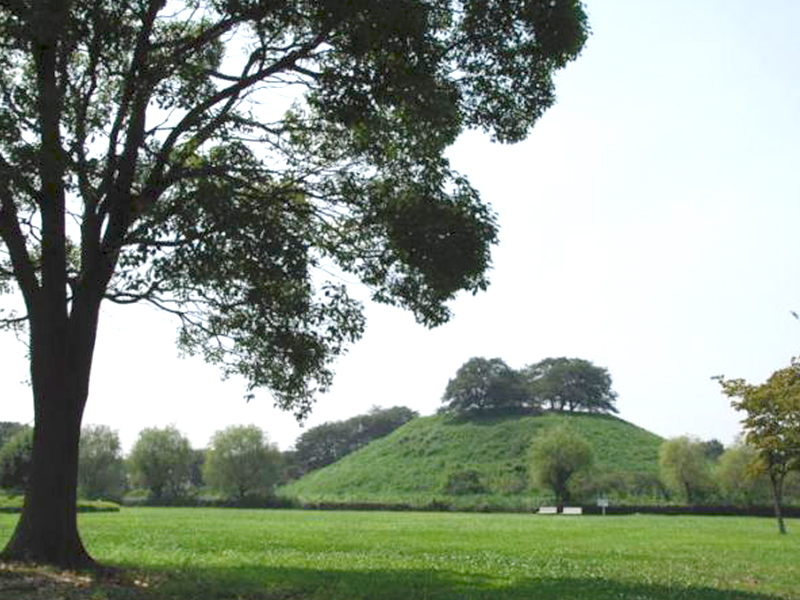
Sakitama Kofun Park is home to nine large megalithic tombs (kofun), such as the "Inariyama Kofun," where the national treasure the "Iron Sword with Golden Illusions" was excavated, and the largest kofun in Japan, "Maruhakayama Kofun," a popular cherry blossom spot. Gyoda City Sakitama, where the park is located, is also known as the origin of Saitama Prefecture's name (the characters for "Sakitama" are also read as "Saitama"), and you can see the stone monument commemorating this in the park.
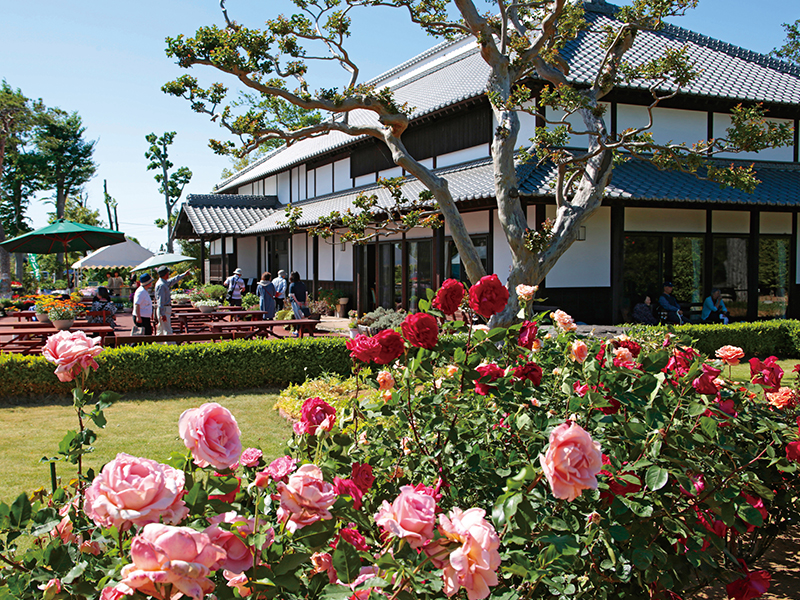
From the moment you pass through the Nagaya gate, you will find yourself in an atmosphere of peace and nostalgia in this old traditional house. In the garden, roses are in full bloom, and inside the facility there is a restaurant where visitors can enjoy a meal and a local produce specialty store for buying fresh vegetables. This is the perfect place for a relaxing time.

This is a unique factory tour facility where you can have fun learning about the world of sweets! You can observe the manufacturing process of Pocky and Pretz up close, learn about chocolate in a fun way, enjoy a quiz tour, see the museum zone where 1500 toys are exhibited, and even take part in a workshop to make your own sweets! This is a spot for not only children but also adults to enjoy through a wide variety of hands-on experiences!
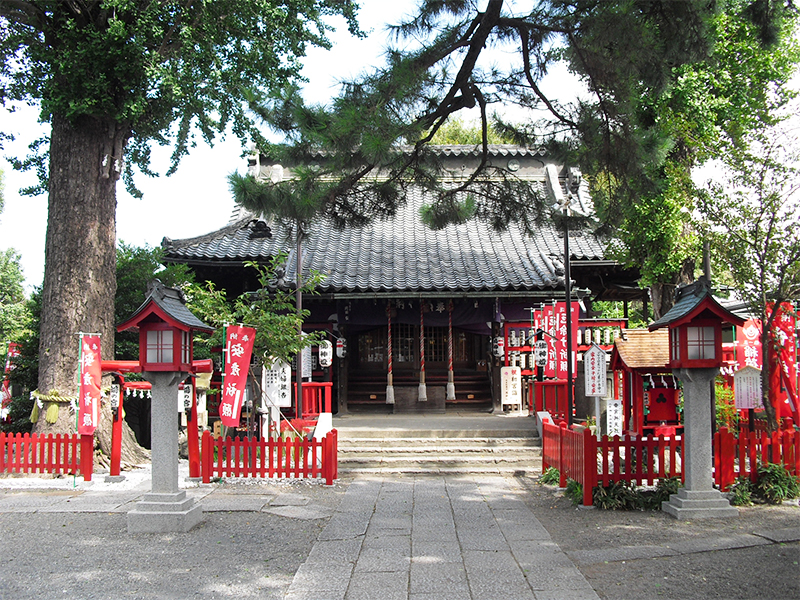
This is the main shrine of Konosu City, where the legend of the konotori (stork), also believed to be the origin of the cities name, has been handed down to this day. In 1873, Raiden Shrine, Kumano Shrine, and Hikawa Shrine were combined to form Kou Shrine. At the end of the year, they hold a Tori no Ichi fair (festival celebrating good fortune and business prosperity).
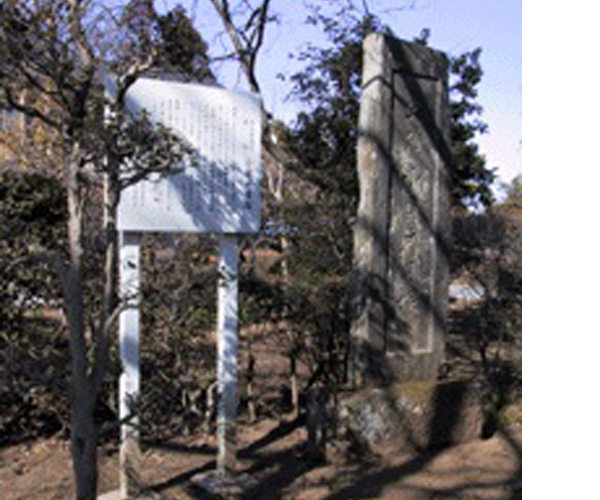
A shell midden (refuse mound) from the first half of the Jyōmon period (about 7,000 years ago). At this time in history, the climate was warmer and the ocean was more inland compared to now. The mound mainly consists of the Japanese basket clams that inhabit the brackish waters of the region, but there are also shells of the Japanese littleneck clam, common Orient clam, and blood clam. The mound is located behind the Kannon statue in the fifth temple of the Adachi Bandō pilgrimage route.
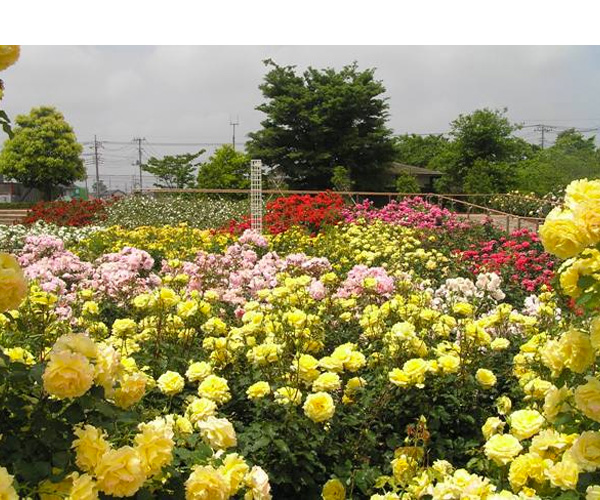
Saitama prefecture's largest rose garden blooms twice a year, once in spring and once in autumn. The best times to visit are from early May to early June and early October to mid-November. There are over 400 varieties and more than 5000 individual roses in this garden of overwhelming beauty. There is also a garden of hydrangeas that blooms in June. Walk through the park and enjoy the relaxing atmosphere, finding various sport and recreation facilities, waterside areas, playground equipment, large sandpits, and much more, which come together to create a stimulating environment with something for everyone!
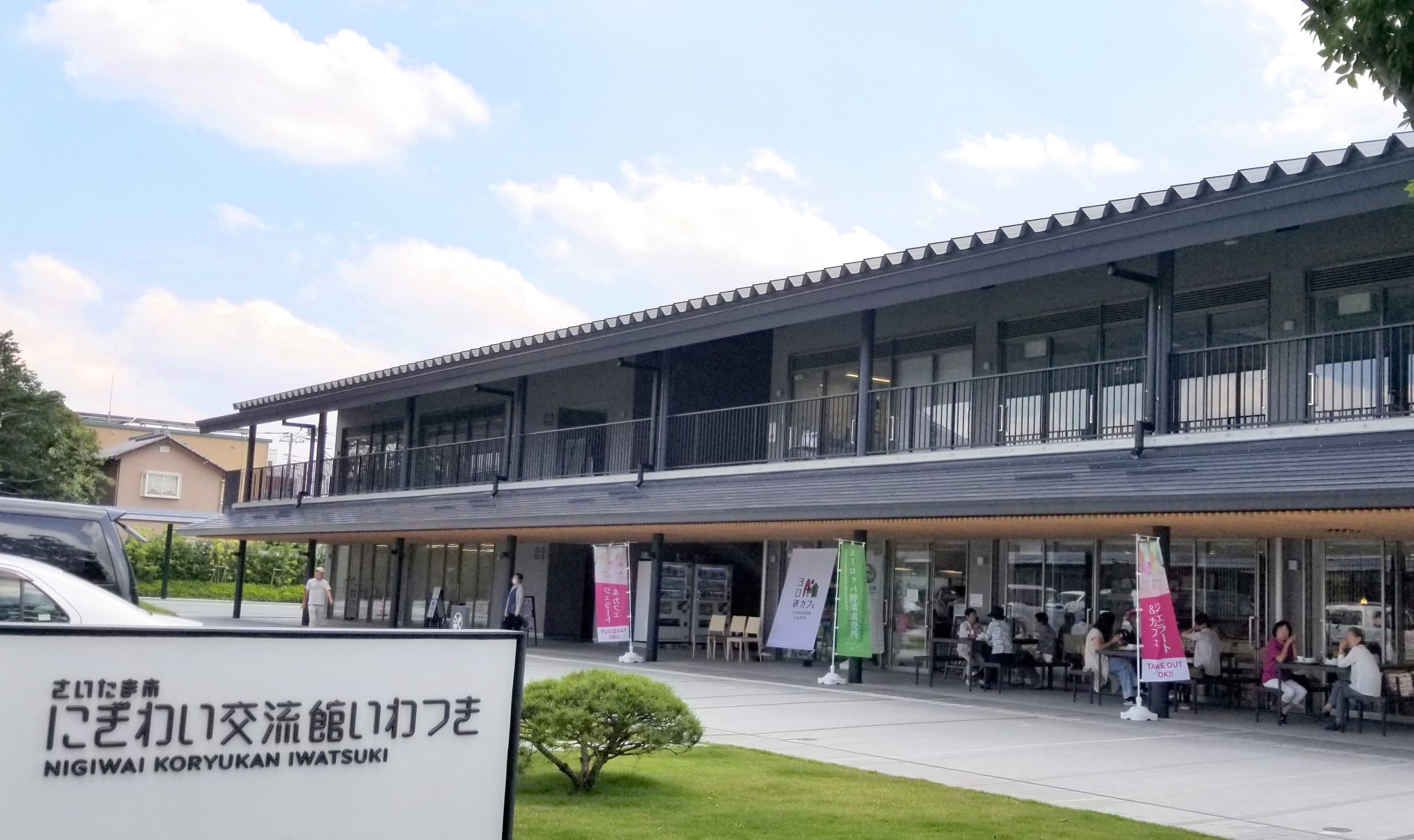
At our exchange center, attached to the Iwatsuki Doll Museum, we promote the history and culture of Iwatsuki. You can participate in various fun events, try cafe menus, local specialties, eat delicious locally harvested vegetables, gain new knowledge, and meet new people! This is a joyful place where people and information come together.
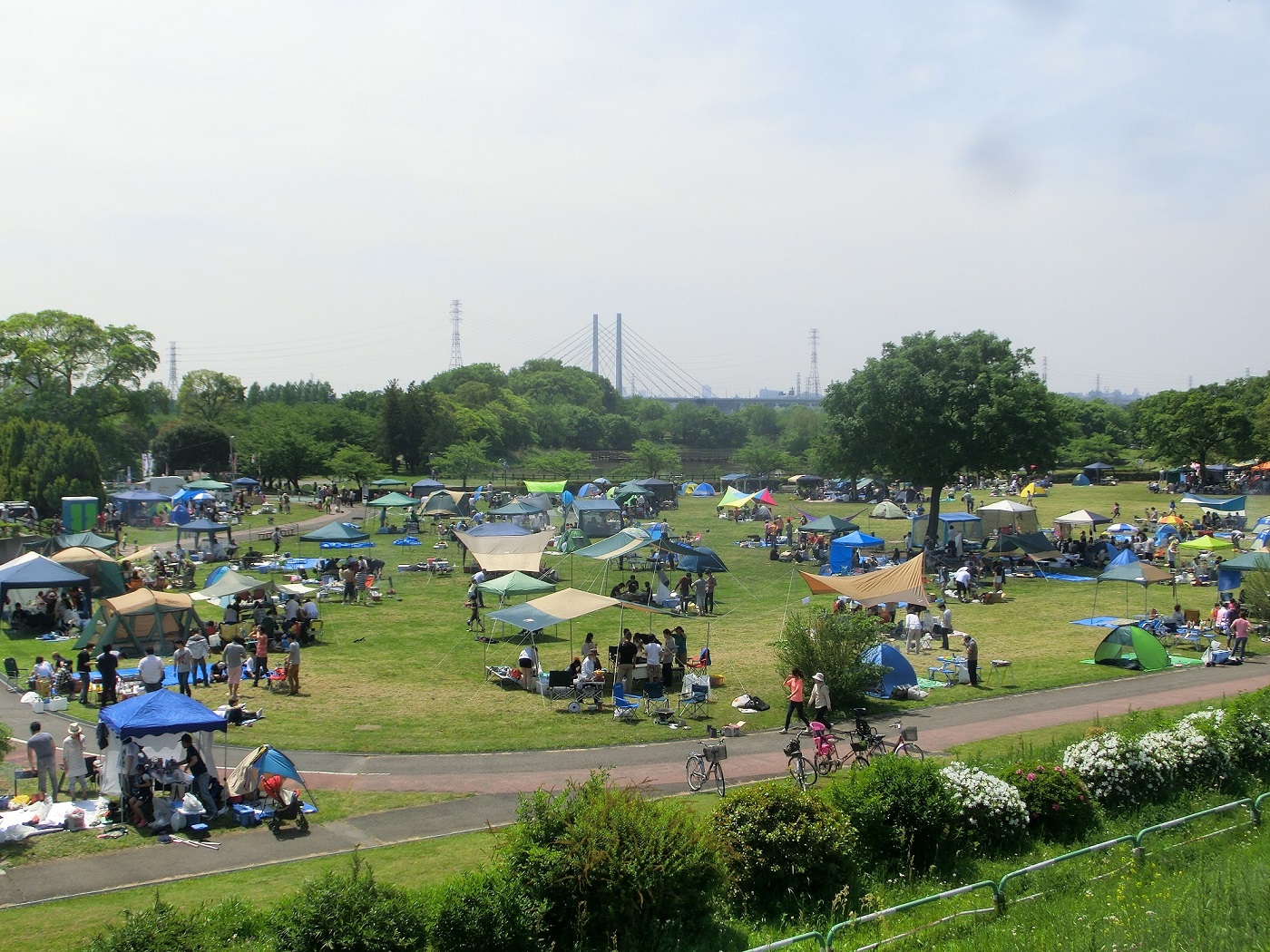
"Saiko" is a park developed along the Arakawa riverbed retention basin that's filled with nature; with the blooming of Japanese primrose and the beautifully maintained fields, visitors can relax and enjoy the change of the seasons. There is a spacious BBQ area where visitors can choose between a free area with no reservation required, and an area with BBQ prepared which requires a reservation. There are also tennis courts, dog friendly spaces, fishing spots and the lakeside area is a popular spot for cycling and windsurfing. With easy access by car, the park attracts more than one million visitors a year!
This site uses cookies to improve the user experience. If you continue to browse, you consent to the use of cookies on this site. Accept
CONTACT
